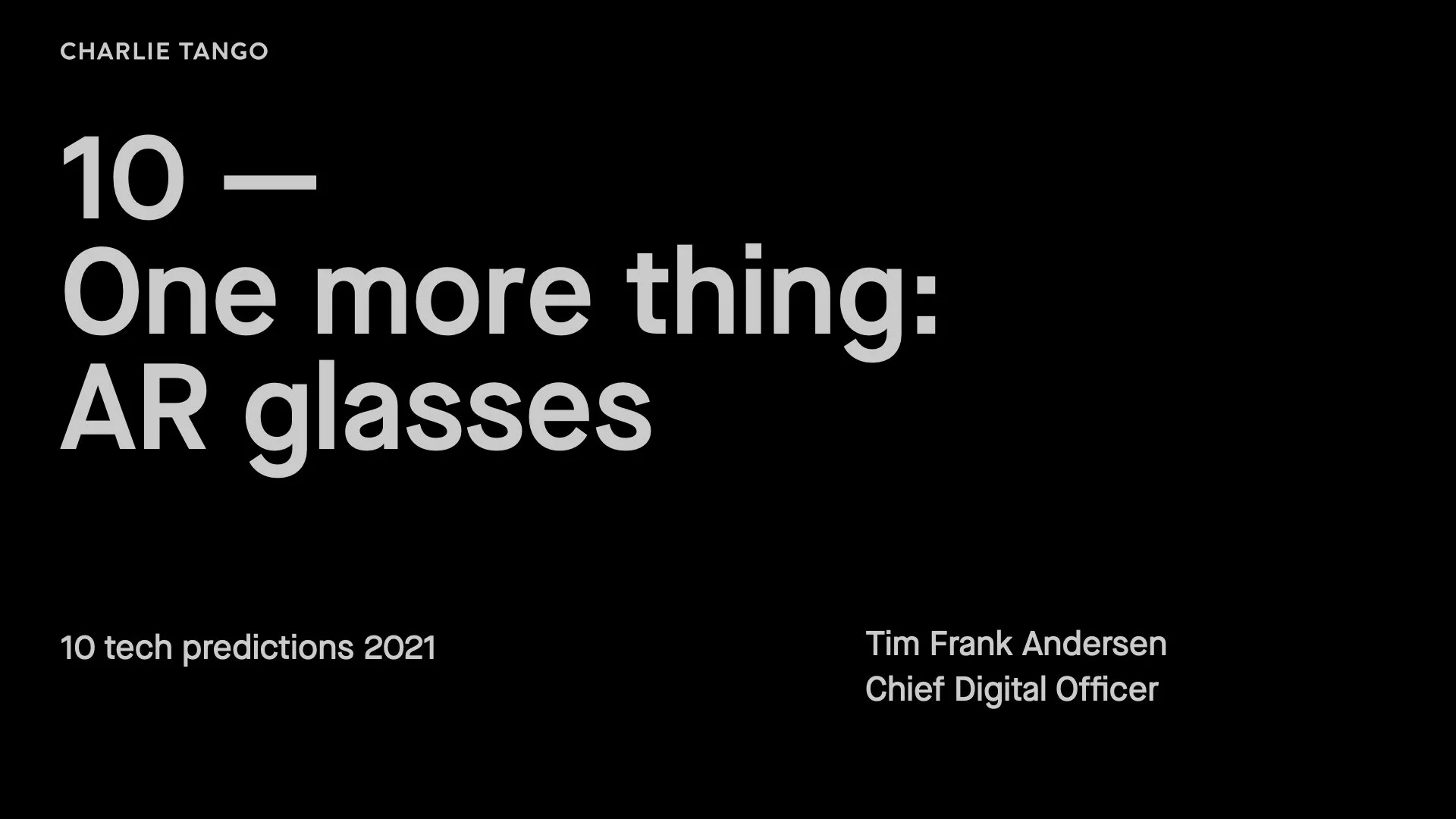One more thing: AR glasses
If you are a tech geek like me, then I guess that you are impatiently waiting for the final breakthrough in AR technology. While we wait, taking a look at the Netflix movie ANON is both a scary and fascinating glimpse into a dystopic version of an AR enhanced reality.
A lot of things are set to happen next year though:
The Chinese startup: nReal will ship its first consumer headset: Nreal light to consumers in Europe through Vodaphone.
Nreal light will launch next year
Another startup: Mad Gaze is also under way with a launch of their Glow Plus glasses.
Or what about playing a Holographics boardgame? Take a look at Tilt Fives upcoming AR product — expected to soft launch in 2021 to the 3000 who put a down payment through Kickstarter.
Tilt Five will ship their holographic Boardgame solution the Kickstarter backers
The problem with these examples though, is that they all make you look kind of dorky, they only support Android and they are tethered to your phone or another device.
Facebook will launch Smartglasses in 2021 in cooperation with EssilorLuxottica
Maybe Facebook will solve this when they launch their first set of “smart glasses” together with Rayban in 2021. They won´t be AR glasses though, but a step in the right direction. If you want to read how far Facebook has come towards a real set of AR glasses, then check out their Aria project.
Focals, by North — a Canadian company, is the developer that has come closest to launching a nicely designed pair of AR glasses. But they got acquired by Google, so they´re gone for now.
And Magic Leap, the company we all put our AR faith in, has refocused their strategy away from consumers and towards healthcare, defense and telecommunications. Last year the company, valued at $6.4 billion, only shipped 100.000 units, so there is still a long way to go before they can claim to be successful.
Meanwhile, a company named Mojo is developing the world´s first medical-grade AR enabled contact lenses, something they call invisible computing.
Science Fiction becoming real: AR enabled contact lenses
They recently launched a partnership with Japan’s largest contact lens maker Menicon, which makes this crazy idea much more achievable. But it is not going to hit the market any time soon.
The next big thing
So, what could be the next big thing? You guessed it: The Apple AR glasses.
This is just a sketch of how the long-anticipated Apple glasses could look like
I know it’s a stretch, and as much a wish than a prediction. Because I really think we all deserve that technical breakthrough in 2021. How probable is it then?
Well, Apple has been warming up to this for several years. The launch of AR Kit 4 which support the built-in LiDAR sensor in the newest generation of Smartphones is a clear sign. The LiDAR Scanner on iPhone 12 Pro measures how long it takes light to reflect back from objects, so it can create a depth map of any space you’re in.
With the Canvas Pocket 3D App, you can scan your room with the built-in LiDAR sensor in the iPhone 12 Pro
Because it’s ultrafast and accurate, AR apps like Canvas can now transform a room into a navigational 3D model, a realistic rainforest, or show you exactly how a new sneaker will fit.
Nike’s AR App let’s you find the right size by scanning your feet
Apple also recently introduced spatial 3D audio for Airpod pro´s, which can make things you’re listening to sound like they’re moving in 3D space.
Developers across the globe are picking up on these new possibilities: Apple has stated that there already are 10,000 AR-enabled iOS apps available. So, this all indicates that we are getting closer to the long-anticipated launch. But Apple is looking for the right killer app and the right timing.
And it might be now. Because the close-downs during the pandemic has increased demands for at-home enhanced experiences. The crave for “home entertainment” and the rise of online shopping looks to be the killer apps we have been waiting for.
Warby Parkers App utilizes the LiDAR scanner to give a very realistic Try-on experience of their glasses
Retailers will introduce AR based product previews, visualizations and virtual try-on, into their online platforms to enhance the shopping experiences. So, the dominating AR using industries look to be Media & entertainment and retail & commerce.
So, all my hopes lie with Apple as I expect them to launch Apple Glasses as the next big thing. The verdict is out though. Some analysts say we have to wait until 2022, but I want to end my tech predictions on a high note and with a bit of optimism, so I predict that they will be announced and demoed in 2021.










